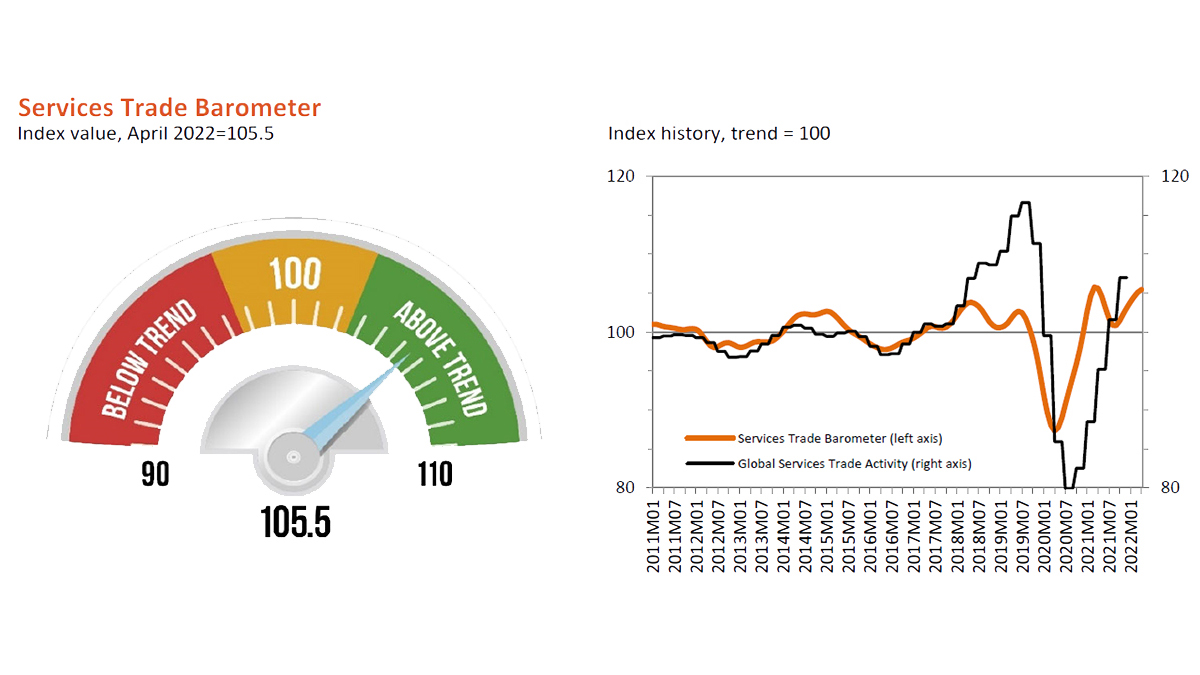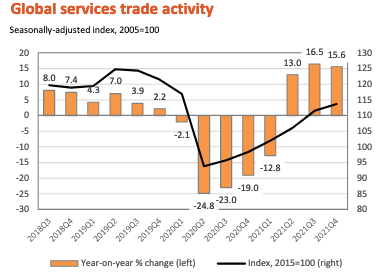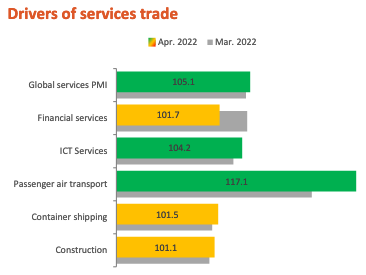
Geneva: World services trade has indicated resilience to the conflict in Ukraine and has continued to grow into the second quarter of 2022, according to the World Trade Organization’s (WTO) Services Trade Barometer, released here today. The latest reading of 105.5 is firmly above the previous reading of 102.5 in September 2021 and comfortably over the baseline value of 100 for the index, signalling that the services trade is likely to post sustained gains in the second quarter once official statistics for the period are available.

Among the Services Trade Barometer’s component indices, the passenger air transport index (117.1) registered the strongest gain, contributing to the above-trend reading in the global index. Strong showings in the services Purchasing Managers’ Index (105.1) and information and communication technology services (104.2) also helped lift the services barometer reading. While it remains above trend, the financial services index (101.7) appears to have lost momentum recently, possibly due to sanctions on the Russian Federation in connection with the conflict in Ukraine. Other indices including container shipping (101.5) and construction (101.1) remain slightly above trend.

Recent developments in services trade are illustrated by the Services Trade Activity Index, which provides an approximate measure of the real volume of world services trade accounting for changes in prices and exchange rates. The index has shown slow but steady growth since the services trade bottomed out in the second quarter of 2020 in the early stages of the global pandemic. The index continued to move towards recovery in the fourth quarter of 2021 with a 15.6% year-on-year increase, although it remained 8.9% below its pre-pandemic peak in the second quarter of 2019.

The Services Trade Barometer highlights turning points and changing patterns in world services trade. Unlike its counterpart for goods, the fluctuations registered by the services indicator coincide with movements in actual trade flows, rather than anticipating them. Readings of 100 indicate growth in line with medium-term trends. Readings greater than 100 suggest above-trend growth while those below 100 indicate the opposite.
– global bihari bureau





